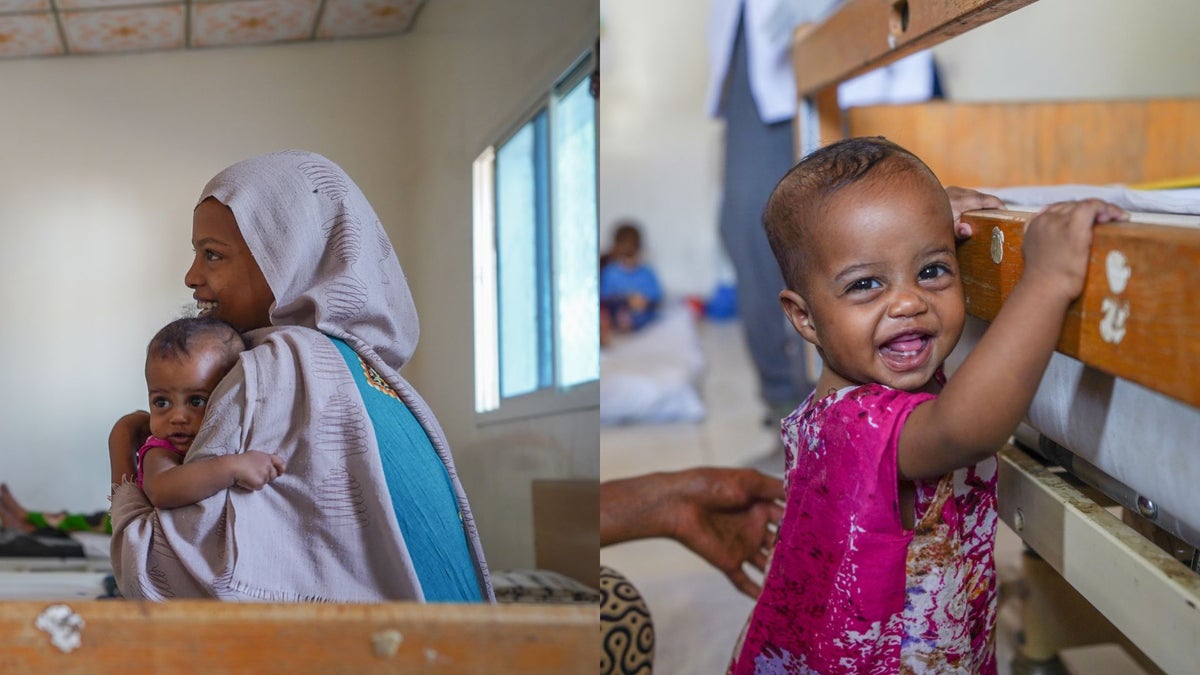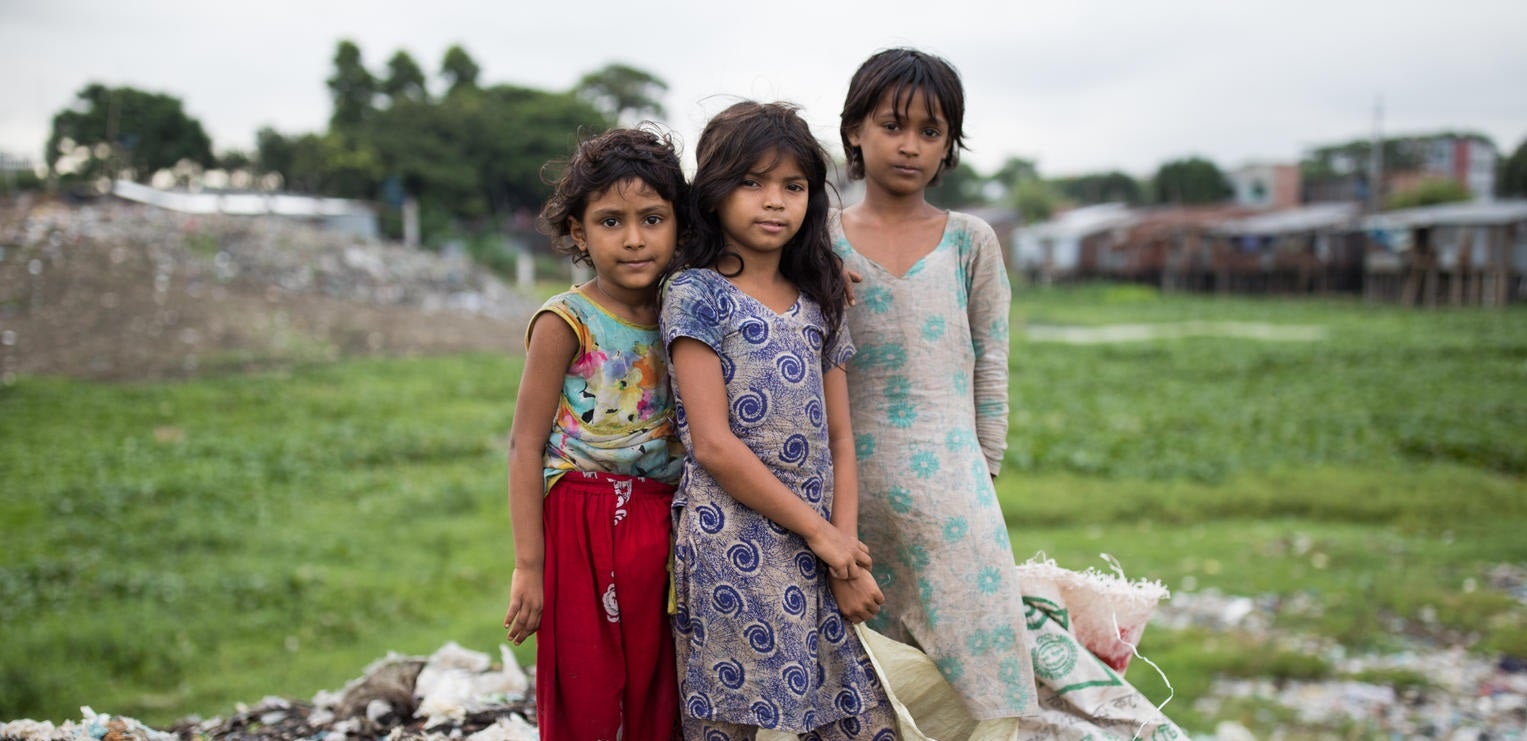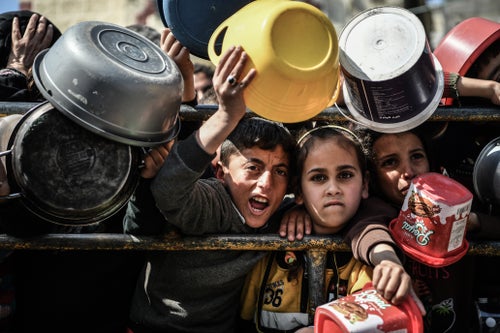The reasons why famine occurs are complex and challenging.
Conflict, climate change, and COVID-19 have all contributed to the looming humanitarian crisis in the Horn of Africa, and beyond. Children are the most vulnerable during times of famine and food insecurity, making them at risk of severe malnutrition, leading to lifelong health and development challenges – even death.
"An escalating malnutrition crisis is pushing millions of children to the brink of starvation – and unless we do more, that crisis will become a catastrophe."
While UNICEF is ramping up its life-saving assistance, we are also making smart investments in the longer-term resilience of communities and their children, through climate-resilient water, sanitation, and hygiene programs.
Here are four things you should know about what is happening now in Horn of Africa and why it means children are going hungry.
Conflict
Conflict puts a strain on food and water supplies and debilitates health systems, increasing the risk of food insecurity and famine. For example, the war in Ukraine has led to an increase in food and fuel prices and reduced the availability of wheat in places where children are already suffering and going hungry.
Often, access to safe water is used as a weapon during times of conflict. Attacks on water infrastructure are common and can have devastating consequences.
Children under five are 20 times more likely to die from diarrheal diseases linked to unsafe water and sanitation than violence in conflict.
During an emergency, UNICEF can reach children with supplies in just 48 hours. Our teams are on the ground before, during and after an emergency to provide access to life-saving supplies.
Disease and malnutrition
“No matter how much food a malnourished child eats, he or she will not get better if the water they are drinking is not safe,” says Manuel Fontaine, UNICEF Director of Emergency Programs.
If the water a child drinks is unsafe this can lead to diseases which can prevent the child getting the nutrients they need to survive. Without these nutrients a child can become malnourished, making them even more vulnerable to waterborne diseases like cholera.

Obsinale, one, is recovering from malnutrition in a stabilisation hospital in Somalia. Fortunately, her twin sister has already been discharged after making a full recovery.
The stabilisation centre beds are full and children are being cared for on the floor. The drought in Somalia is forcing millions of children to starve and become vulnerable to cholera and measles.
UNICEF with partners is providing urgent life-saving treatment and supplies to help children like Obsinale and her twin sister Mersinale. For just $71 you can give the gift of 126 packets of ready-to-eat-therapeutic food (RUTF).
Climate change
Children in the Horn of Africa are experiencing the impacts of one of the worst climate-induced emergencies of the past 40 years. Livestock and crops have been wiped out and hundreds of thousands of people have been driven from their homes, displaced to areas unknown and strange to them.
Floods and other severe weather events also contribute to depletion of safe water and lead to families being driven from their homes.
Countries like Somalia are the least responsible for creating climate change, but they are faring the worst. 29.1 million people in Somalia, Ethiopia and Kenya need urgent humanitarian assistance due to failed rains, with 16.2 million people without access to safe drinking water.

In Turkana, Kenya, four failed rainy seasons have led to an unprecedented drought with harvest loss and high livestock deaths. The Government of Kenya, with the support of UNICEF, have come up with some innovative approaches to the lack of water. One solution is a sand dam that traps and stores water underground in seasonal riverbeds to be used in times of drought.
Sand dams have meant that thousands of people now have access to safe and sustainable water to drink, wash and maintain livestock.
UNICEF’s support to children and their families includes immediate life-saving interventions and building climate-resilient solutions over the long term.
Displacement
In times of drought, when livestock has perished and water has dried up, families have no choice but to leave their homes in search of water, food, and humanitarian assistance.
When children are on the move they are at greater risk of abuse and threats to their health. Often, they have no choice but to drink unsafe water and camps without essentials, like toilets, become hotspots for illness and disease.
“I have nothing to eat, drink or wear,” says Issack.

More than 1.5million people in Ethiopia, Kenya and Somalia have fled their homes because of the drought.
UNICEF is providing urgent treatment for hundreds of thousands of children in the Horn of Africa suffering from severe acute malnutrition and supports early detection and treatment of child wasting.

Related articles
Stay up-to-date on UNICEF's work in Australia and around the world

















